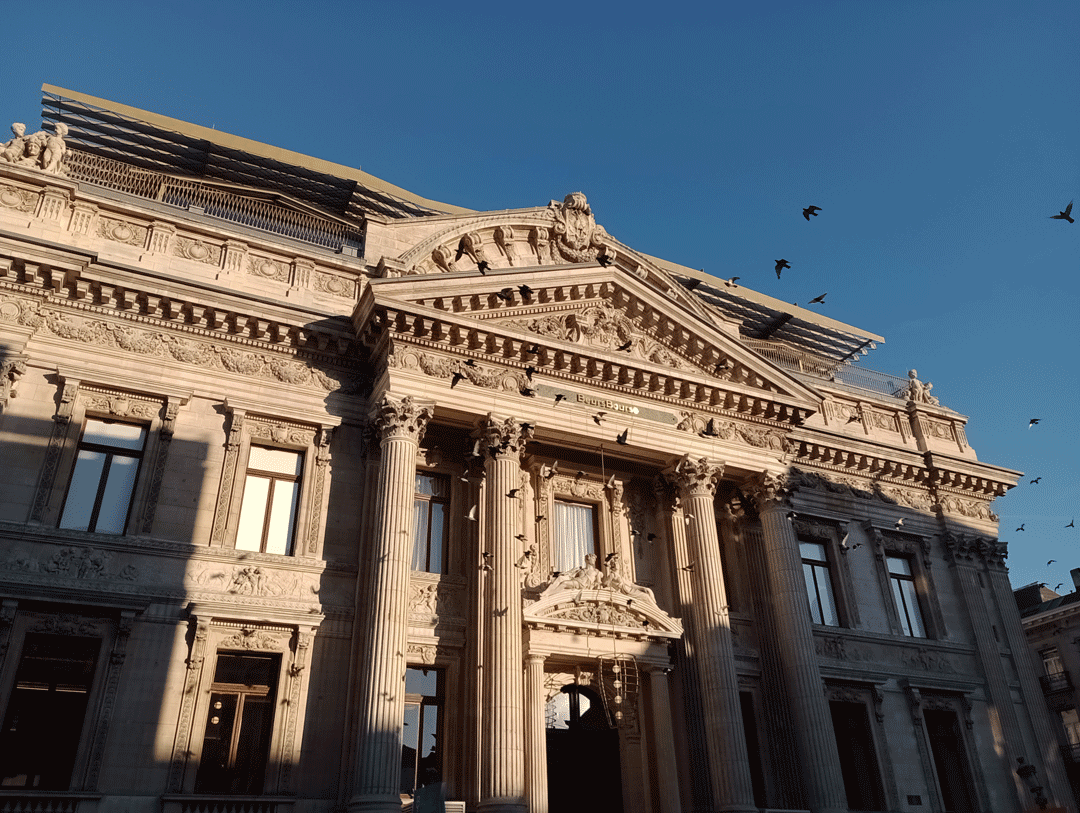A Brussels landmark is transformed into a cultural, commercial and tourist hub
- 04 Oct 2023

The restoration of the Brussels Stock Exchange involved work on 12 000 m2 spread over five floors of the heritage listed building. The restored areas were unveiled to the public in September 2023 as a cultural, commercial and tourist hub.
The restoration work, which started in 2019, received EUR 18 million in funding from the EU through the European Regional Development Fund (ERDF) and the Recovery and Resilience Facility as part of NextGenerationEU, the European recovery plan.
Belgium’s federal, regional and city governments funded the rest of the EUR 80 million cost of the restoration.
A multi-purpose space
The building, which was constructed by Belgian architect Léon Suys between 1868 et 1873 as a business centre and stock exchange, now hosts an interactive beer museum called ‘Belgian Beer World’, a café, a restaurant, a rooftop bar, co-working spaces, exhibition areas and meeting rooms.
An entrance in the building provides access to an underground archaeological site, Bruxella 1238. Here the public can visit the remains of a Franciscan monastery founded in 1238 and the tomb of Duke John I of Brabant.
The project aimed to transform a space that had been unused for several years into a public building contributing to the city’s heritage. The building was originally a financial centre, housing a stock exchange and other related businesses.
The premises were abandoned by 2014, when the last stock market agents left the building with the onset of electronic trading. With the re-opening of the building, the city wants to make it a new meeting place for residents.
A museum of beer
Belgian Beer World, the new highlight, is an interactive museum tracing the history of the art of brewing in Belgium from the Middle Ages until today. The museum celebrates the diversity of styles that Belgians developed over the ages.
About 100 Belgian brewers invested in the Belgian Beer World. The museum has a link with the archaeological site and the tomb of John 1, Duke of Brabant, or Jan Primus in Flemish.
John 1 is also referred to as Gambrinus, mythical king of Flanders and Brabant, who is said to have created the famous Brussels beers, faro and lambic. He was said to have laid the foundations for the brewing industry in Brabant by granting brewing and sales licences.
By offering a unique showcase for Belgian beer and by encouraging consumers to discover new tastes and new brewing products, the museum will help promote smaller brewers in Belgium.
With the collaboration of the main organisations active in promoting tourism in Brussels, the building will serve as an information centre for tourists. It will provide information on places of interest in Brussels and Belgium, particularly for tours around the theme of beer.
The museum will include a training and seminar centre, a beer shop and a Belgian beer documentation centre. The centre aims to focus on the promotion of sustainable beer production by reducing the use of water and energy and limiting CO2 emissions.
Visitors will also be able to see music and dance performances and temporary artistic and cultural exhibitions.
A flagship project
As a flagship project of the ERDF Brussels-Capital’s programme, the EU funding reflects the EU’s commitment to preserving the building’s cultural and architectural heritage while fostering energy efficiency, strengthening entrepreneurship, and promoting small business development.
The EU’s cohesion policy provides much more than just financial resources. Through a shared management approach, public investment decisions are taken through consultation and partnership with local organisations and residents to best meet their needs.
The EU has provided support to the Brussels-Capital Region for decades and has supported many projects, particularly in the areas of climate, energy, environment, mobility, digital technology, industry, research and innovation, and urban renewal.
This support was recently renewed for the 2021-2027 programming period, with an overall financial allocation of more than EUR 300 million.
Other projects
In Brussels, other project examples include CASTII, which consolidated the Interactive Media Art Laboratory as a centre dedicated to the digital arts. The work involved renovating and enlarging the organisation’s existing building. The project proposes a ‘fablab’, a small-scale workshop open to all and dedicated to the creation and development of circular and social economy projects.
Another project in Brussels, Masui4Ever, aims to ensure the sustainability of Zinneke, a non-profit organisation involved in a range of socio-artistic, art education and production work. The organisation hosts the city’s Zinneke parade every two years, an event which connects various Brussels municipalities and showcases the cultural diversity of the city’s neighborhoods.
EU funding enabled the renovation, redevelopment and equipping of 2088 m² of the former Atelier du Timbre building. The work will include building a cultural infrastructure in a neighbourhood lacking such features.
EU funding is also supporting the acquisition and construction of a French-speaking childcare centre with 84 spaces and 1 462m² of space in the city. The work involves the layout of a courtyard and garden of 435 m².
Find out more:


